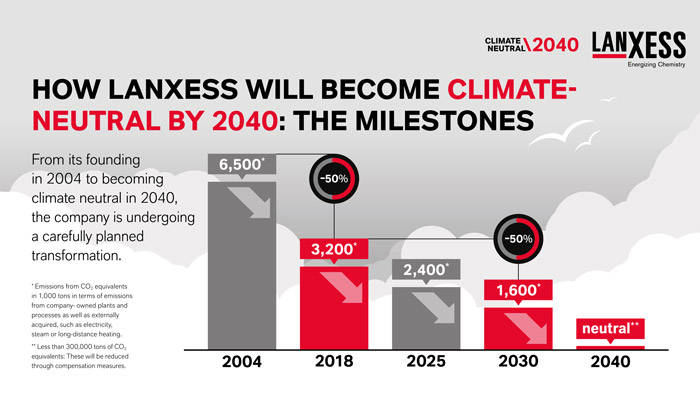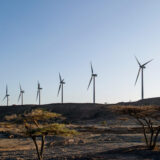
LANXESS to become climate neutral by 2040
Specialty chemicals company LANXESS has set itself an ambitious climate protection target. By 2040, LANXESS intends to become climate neutral and eliminate its greenhouse gas emissions from around 3.2 million metric tons of CO2e today. Already by 2030, LANXESS aims to cut its emissions by 50% compared to the current level to around 1.6 million metric tons of CO2e.
“Under the Paris agreement, the global community decided to limit global warming to less than two degrees. This requires massive efforts on the part of everyone involved. With our goal of achieving climate neutrality by 2040, we are fulfilling our responsibility as a global specialty chemicals company. At the same time, we will be an even more sustainable partner for our customers in the future,” said Matthias Zachert, chairman of the Board of Management of LANXESS AG. Zachert also highlighted the long-term cost savings associated with a more efficient use of resources, saying that “climate protection is a business case”.
LANXESS is taking a three-pronged approach to become climate neutral by 2040.
▪ Launch major impact projects for climate protection:
Over the next few years, LANXESS will put into action special projects to significantly lower greenhouse gases. For example, the group is currently building a facility for the decomposition of nitrous oxide at its Antwerp, Belgium, site. The new facility will begin operations in 2020 and reduce annual greenhouse gas emissions by around 150,000 metric tons of CO2e. After a second expansion in 2023, CO2e emissions will fall by another 300,000 metric tons.
In addition, LANXESS is switching the entire energy supply at its Indian sites to renewable energy sources. There, the group is massively expanding its supply of biomass and solar power and will no longer use coal or gas in the future. This will cut CO2e emissions by a further 150,000 metric tons from 2024. With these projects and other measures, LANXESS will decrease its CO2e emissions by a total of 800,000 metric tons by 2025, investing up to EUR100 million (USD110 million) in the process.
▪ Decouple emissions and growth:
LANXESS is on growth course. But despite increasing production volumes, emissions of greenhouse gases in the individual business units are set to decline. In addition to technological efficiency, changes to governance instruments play a role, with the impact on the company’s carbon footprint becoming an investment criterion for organic growth and acquisitions. This gives business units that achieve better than average reductions in greenhouse gas emissions a direct financial advantage. Moreover, lowering CO2e will be introduced as an assessment criterion in the bonus system for managers.
▪ Strengthen process and technological innovations:
LANXESS is revising many of its existing production processes in order to become climate neutral by 2040. For example, the group will continue to improve its “Verbund” structures, e.g., when it comes to heat exchange between plants and air purification. Other procedures must first be developed on an industrial scale. The group is therefore focussing its research more closely towards climate neutral processes and technological innovation.














